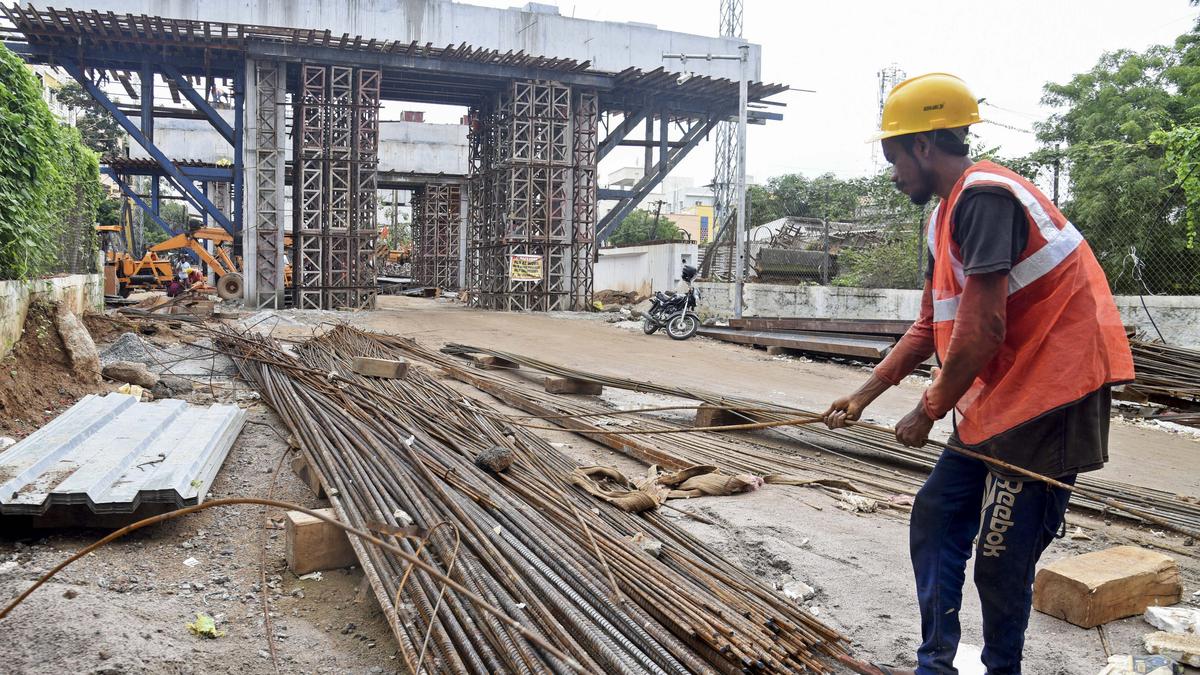
The construction worker conundrum Premium
The Hindu
During the mornings, the labour addas (informal job markets where labourers hope to get hired for a day) of Hyderabad are filled with young men. Speaking in Bengali, Odiya, Hindi, and other languages, they hope to get hired by supervisors of construction sites.
During the mornings, the labour addas (informal job markets where labourers hope to get hired for a day) of Hyderabad are filled with young men. Speaking in Bengali, Odiya, Hindi, and other languages, they hope to get hired by supervisors of construction sites.
Babul Shaik, a mason, arrived five years ago from a village in Malda district of West Bengal. “I had to look for work because I have no land, and no property except a small house that my father built,” he says. “I live in a room with four others from my village. In the morning, I walk to the Zehra Nagar labour adda, which is near our room. I mostly do plastering work and make ₹1,000-1,200 a day.”
At an under-construction site, Laxmi, 30, from Chhatisgarh, works as a helper. “I work from 8 a.m. to 5 p.m. or even 7 p.m. I carry material [cement and sand amalgamate] into bathrooms, and throw debris out. I get paid ₹500-600 a day,” she says.
At larger construction sites, a contractor is entrusted to source migrant labourers. “Most of the larger projects are in West Hyderabad, in and around the IT Corridor. It is better to work here than live under tarpaulin sheets at smaller sites,” says a property consultant who deals with large construction firms.
Informal sector workers’ rights bodies such as India Labour Line have identified 220 labour addas spread across the Greater Hyderabad Municipal Corporation limits. These are frequented by migrants from Bihar, Uttar Pradesh, West Bengal, Odisha, and Jharkhand. About 100 to 1,200 workers go to these addas looking for work every day.
While there is no conclusive data on migrant workers in Telangana, the number was estimated to be around 8 lakh-10 lakh before the pandemic. More than 44 lakh informal sector workers are registered on the eShram portal in Telangana. In the construction sector, an official data set for Hyderabad district shows that 22,934 male and 4,457 female workers are registered. The Telangana Building and Other Construction Workers Welfare Board (TBOCWB), a state-run body that looks into the well being of workers, says the number of workers is 15,06,171.
“The problem is that a vast majority of the workers, including construction workers, are not registered,” says Brother Varghese Theckanath, director of the Monfort Social Institute. The lack of registration means that these workers do not get access to welfare schemes. This includes compensation for accidental deaths, suffering disability while working at construction sites, and natural deaths.





















 Run 3 Space | Play Space Running Game
Run 3 Space | Play Space Running Game Traffic Jam 3D | Online Racing Game
Traffic Jam 3D | Online Racing Game Duck Hunt | Play Old Classic Game
Duck Hunt | Play Old Classic Game











